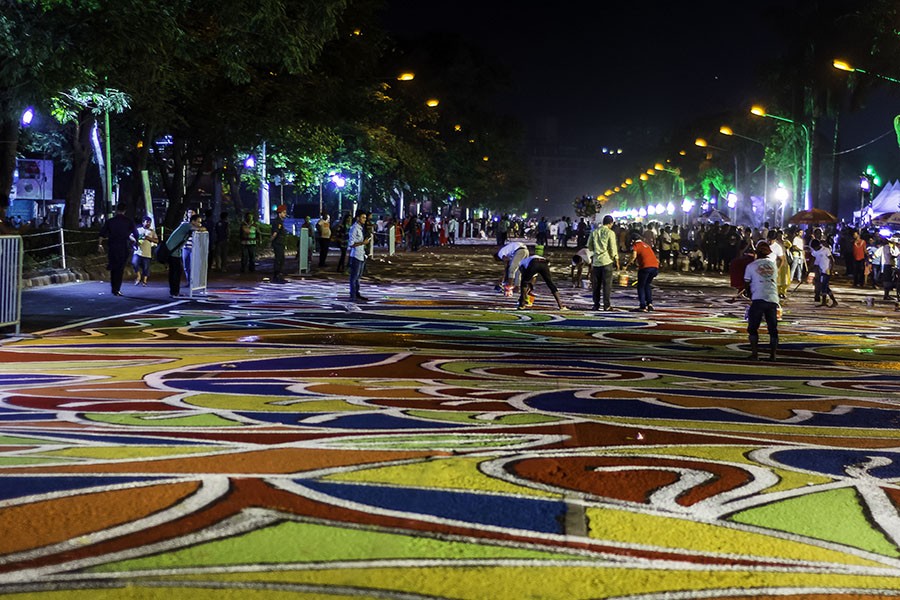Alpana is such a part of Bengali’s life that almost every Bengali girl enjoys decorating with this scarlet painting on different occasions.
Students paint Alpana on Pahela Baishakh, February 21, during Durga Puja and on a few other occasions to add merriment.
If you visit Dhaka University a day before Pahela Baishakh, you will see how the students are enjoying themselves painting Alpana on the streets.
This colourful celebration can never be recognised without one of the Bengali culture’s most artistic decorations.
Alpana is a genuine work of art. Deriving from the Sanskrit word ‘Alimpana’, the very word has its inception profoundly established in old agricultural customs.
Alpana was initially done in villages by the young ladies to decorate the entryways, floors and the places before the icons of gods.
At first, Alpana saw the utilisation of motifs of paddy leaf, feet of goddess Laxmi, lotus and different pictures which were intended for inviting wealth into the house. However, this artistic pattern still serves one purpose - dispel all the evils from the beginning of something new, be that a wedding or a new year.
Bengali women observe broths on different events, which expects them to follow the custom of drawing Alpana.
In the past, while observing ‘Badhuli Broto’ women were seen to draw motifs on the floor to ensure their husband’s safe return. Ladies would often get together to create the floor illustration with their creative ingenuity and thus it provided women a vehicle for expression. In ancient times it was an art form that was practised by rural women, and in the present world, there has been a massive change of attitude where this traditional artworks as the spirit of the whole nation.
As a result, in 2012 the fine arts students along with all types of people in general spent an entire night painting a 350,000 square feet Alpana which represents the nation’s folk culture and the dedication of the generation to uplift their own culture in front of the world.
There is a village in Chapainawabganj named ‘Alpana gram’ where the women decorate the walls of their houses with various scarlet motifs as they consider it as a sacred thing.
Alpana inspires Jebin Jeba, an economics undergraduate student, to do other things. It is more of an escape for her from regular life as it helps her bring back all her attention to one point and concentrate.
“To me, Alpana is all about some structures and shapes. Once you are done deciding the structure all you need to do is to connect them all together which gives you satisfaction as you are making a colourful object from a mere skeleton”, she said.
Jebin thinks that people can make money out of Alpana art as this plays an important role in the interior design of restaurants.
Mariha Mahboob, a student of the Faculty of Fine Arts, thinks that the main object of Alpana is to bring happiness and beauty to life. For her, Alpana is the way of expressing the beauty of happiness through designs.
Alpana is such a simple form of art that it can be done by anyone. It can be colourful, it can also be black and white sometimes. It can be really simple and it can also be very complicated at times- just like different phases of human life.
Mayesha Afiya Jarin is currently studying law at Bangladesh University of Professionals.


